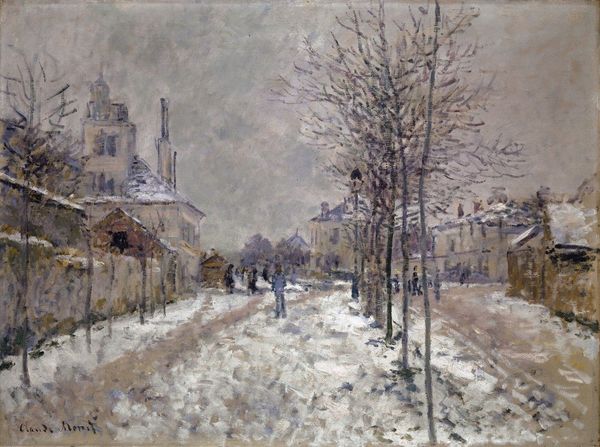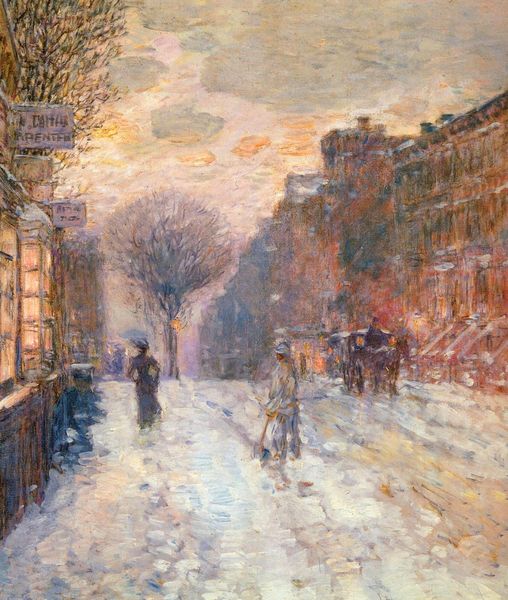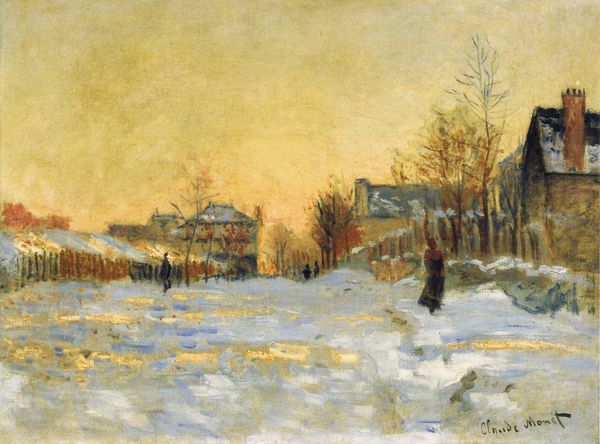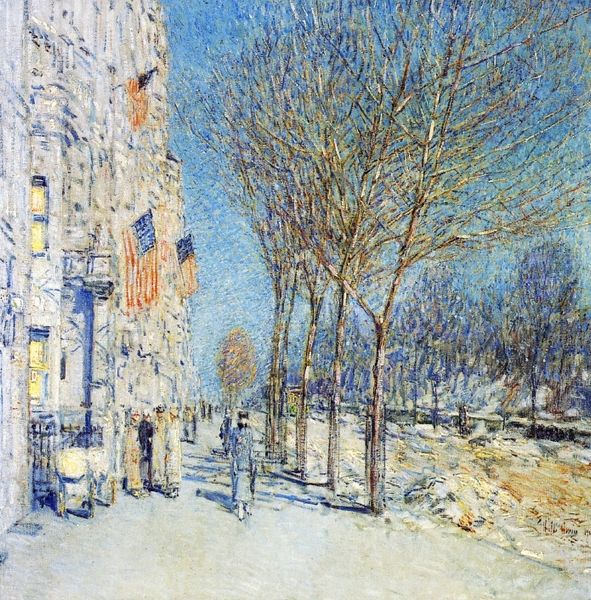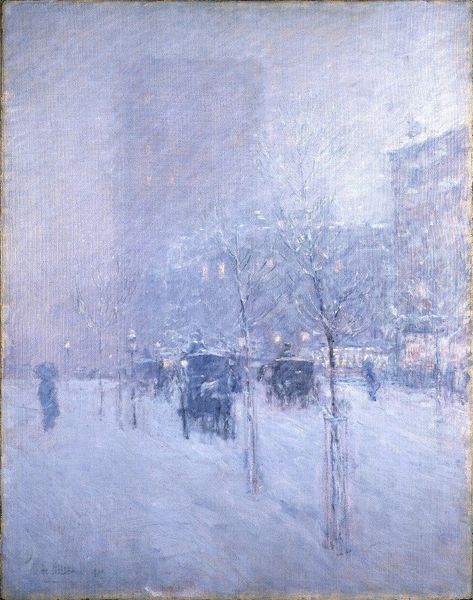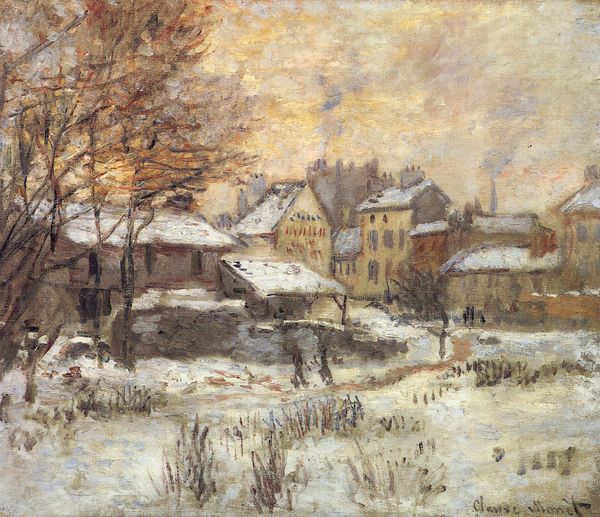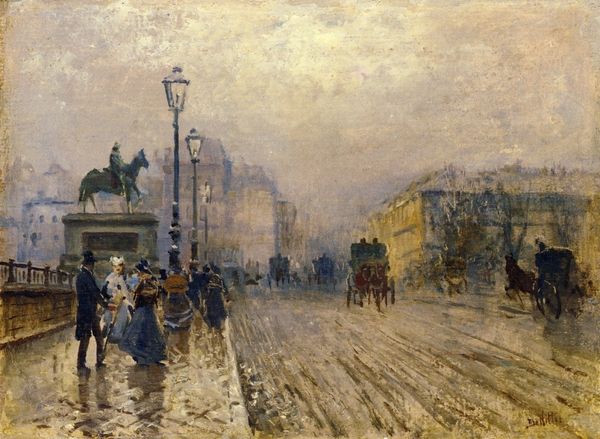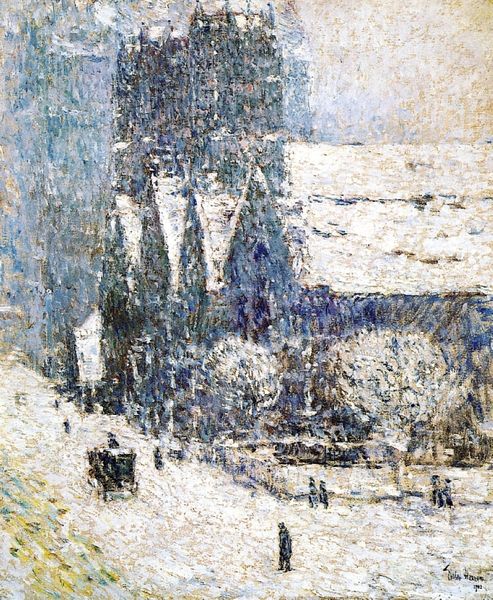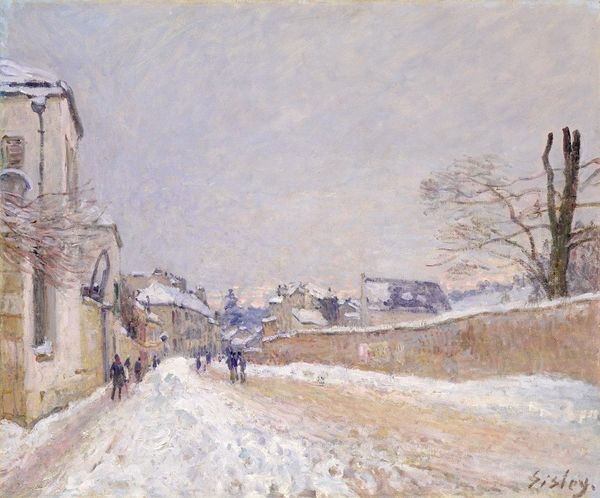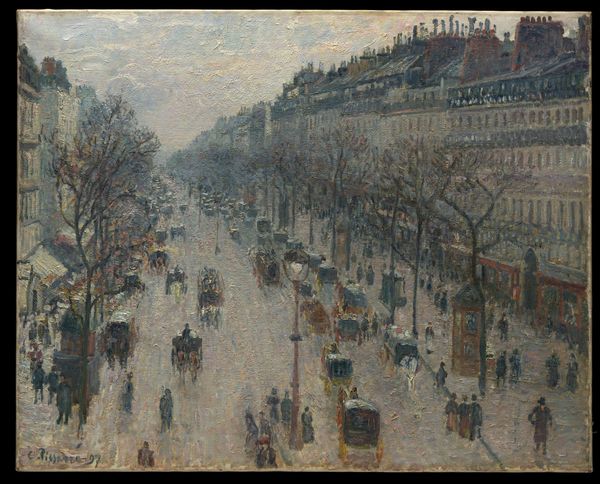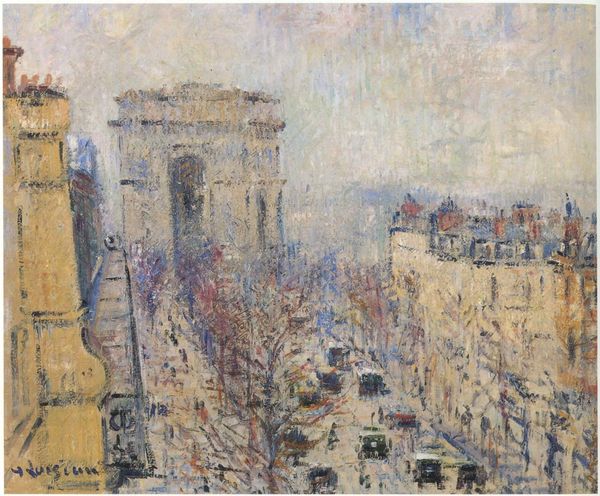
Copyright: Public domain
Curator: This is "Škofja Loka in the Snow" created by Ivan Grohar in 1905. It is a snowy landscape done in oil paint. What do you make of this wintery scene? Editor: The heavy impasto is so captivating! It's like Grohar captured the sheer density of snowfall, not just visually, but texturally. It makes me want to reach out and feel the cold. Curator: Exactly. Notice how the town almost dissolves into the snow. Buildings become muted shapes. Is there perhaps something beyond representation at play here? Maybe evoking a kind of national feeling of quietude, endurance, and simplicity? Editor: That's interesting. It also calls to mind Jung's concept of the collective unconscious – the symbols and archetypes we share across cultures. Snow often represents purity, a blank slate. But also, in colder climates, it might speak of a starker collective memory – the hardships, isolation, and stark beauty of a land shaped by winter. Curator: Absolutely! It's as if Grohar invites us to feel the weight of history and collective experience within this deceptively simple image. What about the use of light here? Editor: The subdued palette, the way light diffuses through the snow...it reminds me of visual representations of dreams and liminal states. It’s like he’s painting a memory, rather than just a place. Perhaps memory of an endless winter? Curator: Perhaps! And there is also something about the structure: two buildings forming a central area and creating this sensation of being swallowed, submerged into it. The feeling that what we thought was the solid ground disappeared, as if under the weight of that white element… Editor: Yes! We see how shapes are suggested rather than fully drawn, leading to uncertainty... Almost a metaphysical space! It's evocative; it pulls at something deep inside me. It invites reflection beyond the surface of what is visually evident. Curator: It certainly lingers in the mind, a perfect echo of winter's hush. Editor: Precisely, and it highlights how images are vessels carrying so much more than what's on the surface.
Comments
No comments
Be the first to comment and join the conversation on the ultimate creative platform.
